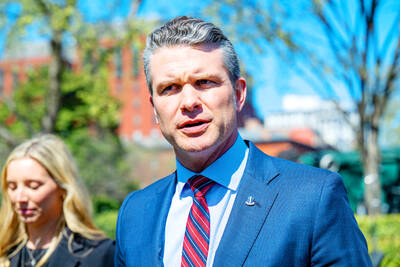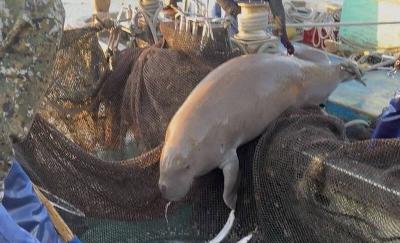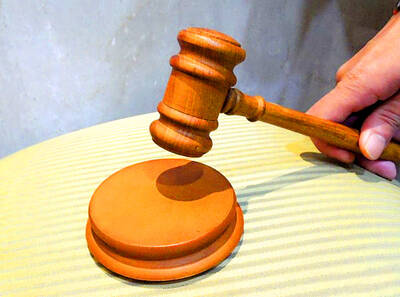The Taipei City Government plans to expand its “movable library” program which it launched a month ago to encourage reading and it intends to place more bookshelves on public buses to allow more passengers to borrow books.
The program provides books on 62 city buses on routes 1, 32 and 205, and allows passengers to borrow books for free, without the need to apply for a library card. People can return the books on the bus or at any of the city’s public library branches.
Taipei Mayor Hau Lung-bin (郝龍斌) said books have been borrowed 10,712 times since the program was launched, adding that the city government would expand the program and place bookshelves on more buses.
“Taipei leads other cities in book borrowing rates, and we hope the innovative measure will further encourage people’s interest in reading and make reading part of Taipei’s culture,” he said.
The city government also plans to place public bookshelves in MRT stations, on MRT trains or at venues around public transportation sites, and to allow passengers to borrow books at various locations besides the traditional libraries, he said.
Taipei City Library division chief Liu Hui-ling (劉惠玲) said the books can be borrowed for one month, and passengers who borrow books on the buses could return them to the bookshelves on the buses or to any of the city library branches.
She attributed the success of the service to the people who donated books and said the city’s libraries welcome the donation of more books as they seek to expand the collection in movable libraries on the buses.
To donate books, the Taipei Public Library can be called at 02-2755-2823 during office hours.

‘DENIAL DEFENSE’: The US would increase its military presence with uncrewed ships, and submarines, while boosting defense in the Indo-Pacific, a Pete Hegseth memo said The US is reorienting its military strategy to focus primarily on deterring a potential Chinese invasion of Taiwan, a memo signed by US Secretary of Defense Pete Hegseth showed. The memo also called on Taiwan to increase its defense spending. The document, known as the “Interim National Defense Strategic Guidance,” was distributed this month and detailed the national defense plans of US President Donald Trump’s administration, an article in the Washington Post said on Saturday. It outlines how the US can prepare for a potential war with China and defend itself from threats in the “near abroad,” including Greenland and the Panama

A wild live dugong was found in Taiwan for the first time in 88 years, after it was accidentally caught by a fisher’s net on Tuesday in Yilan County’s Fenniaolin (粉鳥林). This is the first sighting of the species in Taiwan since 1937, having already been considered “extinct” in the country and considered as “vulnerable” by the International Union for Conservation of Nature. A fisher surnamed Chen (陳) went to Fenniaolin to collect the fish in his netting, but instead caught a 3m long, 500kg dugong. The fisher released the animal back into the wild, not realizing it was an endangered species at

The High Prosecutors’ Office yesterday withdrew an appeal against the acquittal of a former bank manager 22 years after his death, marking Taiwan’s first instance of prosecutors rendering posthumous justice to a wrongfully convicted defendant. Chu Ching-en (諸慶恩) — formerly a manager at the Taipei branch of BNP Paribas — was in 1999 accused by Weng Mao-chung (翁茂鍾), then-president of Chia Her Industrial Co, of forging a request for a fixed deposit of US$10 million by I-Hwa Industrial Co, a subsidiary of Chia Her, which was used as collateral. Chu was ruled not guilty in the first trial, but was found guilty

DEADLOCK: As the commission is unable to forum a quorum to review license renewal applications, the channel operators are not at fault and can air past their license date The National Communications Commission (NCC) yesterday said that the Public Television Service (PTS) and 36 other television and radio broadcasters could continue airing, despite the commission’s inability to meet a quorum to review their license renewal applications. The licenses of PTS and the other channels are set to expire between this month and June. The National Communications Commission Organization Act (國家通訊傳播委員會組織法) stipulates that the commission must meet the mandated quorum of four to hold a valid meeting. The seven-member commission currently has only three commissioners. “We have informed the channel operators of the progress we have made in reviewing their license renewal applications, and